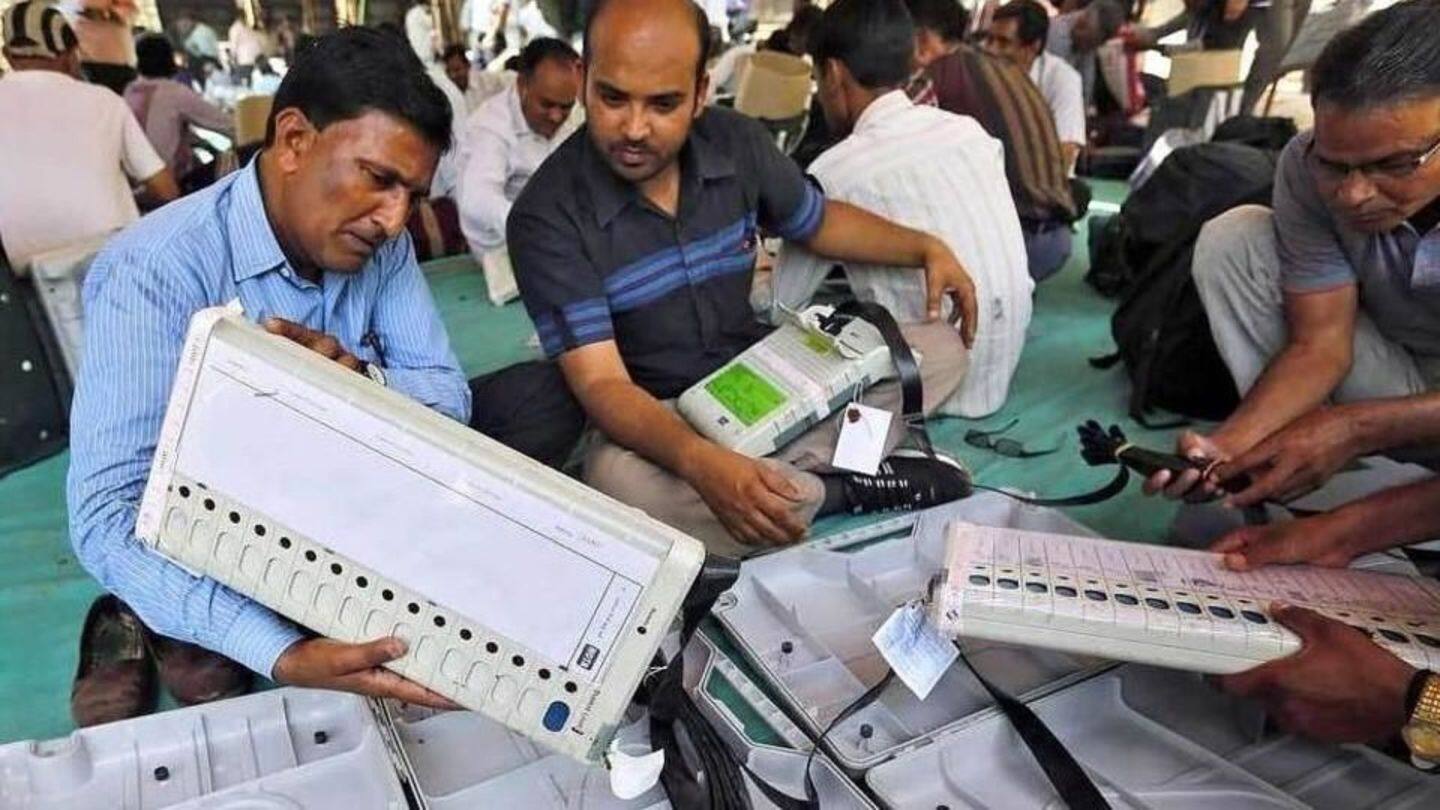
Simultaneous Centre-state polls from 2018? EC says it's possible!
What's the story
EC on Wednesday while launching the Electoral Registration Officer (ERO) network, a web-based application to conduct efficient elections, has asserted that it is "logistically equipped" to hold simultaneous polls for LS and State Assemblies by September 2018. Earlier, on September 30, EC had mandated that voter-verifiable paper audit trail machines (VVPAT) will be used in all polls. Know more!
VVPATs
How did the EC prepare for conducting simultaneous elections?
With the view of holding simultaneous election in 2018, Centre had asked EC its requirements for managing such elections. EC had requested funds for purchasing VVPATs. Subsequently, EC received Rs. 3,400cr for VVPAT machines and Rs. 12,000cr for EVMs. Election Commissioner OP Rawat has said that EC will have 40L VVPATs by September 2018, making it possible to conduct simultaneous polls.
About
What are VVPATs and why have they become necessary?
After opposition parties BSP, AAP and Congress accused EC of rigging the current EVMs in BJP's favor and about 16 parties asked EC to return to the paper ballot system for greater transparency, EC decided to shift to VVPATs. VVPATs provide a slip indicating the voted party's symbol to demonstrate that the voter's choice is appropriately recorded in the EVM.
Do you know?
How will the ERO unveiled by EC help?
ERO unveiled by EC will connect individuals from the booth level to the national level involved in the voting process. ERO will also act as an online register for voters to automatically detect duplicate voter registration. This could make way for e-voting in the future.
Simultaneous elections
Meanwhile, in 2016, Modi had pitched for simultaneous centre-state elections
In 2016, Modi had asked parties to consider the possibility of simultaneous parliamentary and state Assembly elections. He asserted that due to separate elections, governance is stalled because of the Model Code of Conduct. He said election spending increased from Rs. 1,100cr in the 2009 LS polls to Rs. 4,000cr in 2014 and argued that these costs may reduce in case of simultaneous elections.
Do you know?
Why is Modi clamoring for simultaneous polls?
The Wire reports that Modi's interest in simultaneous polls may be politically motivated as BJP could organize a "wave" by organizing an aggressive campaign as done in the 2014 elections to convince voters to vote for the same party in centre and state.
Simultaneous polls
Is the government's idea of simultaneous elections a new one?
The government's idea of conducting simultaneous elections is not novel. After India's independence, LS and state Assembly polls were held simultaneously. However, the Congress split in 1969 led to the premature dissolution of LS. This along with Article 356's liberal use, i.e. centre's power to impose emergency if state's constitutional machinery breaks down, led to disruption of the simultaneous elections cycle.
Counterview
What is the case against simultaneous elections?
There are some arguments against simultaneous elections. In case simultaneous elections are held in 2019, will the Assemblies elected in 2017-2018 be dissolved? This may need consensus from all parties. In case there is breakdown of constitutional machinery in a state, will they be under president's rule till the next elections? Moreover, frequent elections may be promoting accountability by keeping parties on their toes.